HBSA History
Some comments on the collecting of firearms (leading to the formation of the HBSA)
By David Penn
Early collecting: Before the 19th century, most collections of firearms tended to be unconscious gglomerations, as arms were superceded and relegated to display. Where firearms were consciously collected, they were often acquired as trophies of war, or as brand-new examples of technological wizardry with which to amaze one’s friends, or as superb examples of decorative art (artists of the first rank, including Durer and Holbein, were involved in the decoration of weapons) or the gunsmith’s skill.
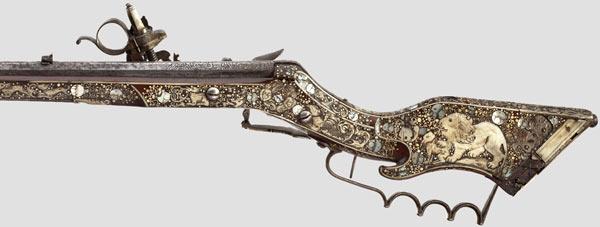
The 19th and 20th centuries: During the 19th century there burgeoned a serious antiquarian and scholarly interest in firearms. At first, this concentrated on arms of the highest quality, often magnificently embellished, and its viewpoint and terms of reference stemmed from the fine and decorative arts. The 19th century was of course a time of intense technological innovation, beginning with the flintlock muzzle loader and ending with firearms technology and cartridge designs still in use today. This evolution itself began to be studied and collected, particularly as the increasing scarcity in the market and rising prices of the older ‘armes de luxe’ priced them beyond the means of all but the rich.
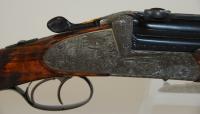
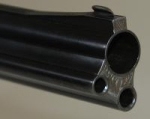
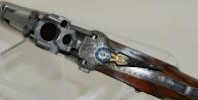
The growth of literacy and the popular study of history in the later 19th century also engendered an interest in firearms not for their aesthetic appeal but for their historical and personal associations, the sensation of ‘shaking hands with history’. This was hardly surprising as gunpowder ranks along with the wheel, the printing press and the personal computer in its influence on society.

Such studies view the firearm in terms of its use, rather than as a passive object, and therefore give far more attention to its ammunition and ballistics, for a firearm considered in isolation from its ammunition tells only half the story.
This has resulted in recent years both in a growth in the study and collection of ammunition, and, on occasion, the wish among collectors to fire an arm, if only once, to establish performance.
As ‘better’ arms are studied intensively and the published literature about them grows, so their financial value tends to rise. Some collectors and students of arms therefore move, in quality terms, down market to consider cheap, commonly distributed arms, often in their manufacturing or social context (where such widely distributed arms have an impact far more significant than the rare arme de luxe), for the concepts of mass production and interchangeability of parts sprang from the arms industry. Such studies often involve the need to inspect large numbers of specimens of manufactured types to establish product evolution.
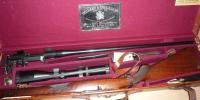

The position today: In short, collecting has moved from a narrow aesthetic appreciation of a relatively small number of ‘firearms as art’ to a broad interest in all types of arms in their wider social and historical context.
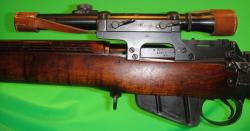
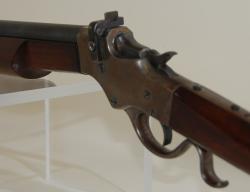
The law and the collector: As most European countries made serious attempts to control the ownership of firearms during the 1920s and 30s (itself in part a result of the widening of governments’ active involvement in and control over their citizens’ lives and activities during the First World War) the great majority considered it expedient to place outside the licensing system those firearms which by virtue of their age and obsoleteness were not likely to be used for their original prime utilitarian function and which were perceived as a minimal threat to society. Early breechloading rifle At this period, most legislation introduced the concept of an ‘antique’ firearm but did not precisely define it. Nor did most legislation of the pre-war period specifically address the question of collecting more ‘modern’ arms (broadly ‘breech loading’ rather than ‘muzzle loading’ arms, although many early breech loading systems, such as the ‘pin fire’ were obsolete or fast becoming so by the 1920s) subject to licensing, and collectors were left to fit, as best they could, within the broad framework of national legislation.
The 1970s: During the 1970s several European countries attempted either to ban or severely tighten controls over the collecting of more ‘modern’ firearms as part of a wider tightening up of controls. These included the UK’s Green Paper of 1973, the Finnish attempt to introduce a law modelled on that of Sweden in 1974 and the (subsequently liberalised) Italian law of 18 April 1975. These measures were introduced against the background of urban terrorism and of a 1971 Council of Europe proposal to harmonise firearms controls to combat criminal violence.

The growth of national collectors’ organisations: The national attempts at limiting collecting by and large foundered, but they did precipitate an increased banding-together of collectors and the founding of national collectors organisations (such as the Historical Breechloading Smallarms Association in the UK, where the interests of collectors of muzzle loaders were already met by the Muzzle Loaders’ Association of Great Britain and the Arms and Armour Society). These legislative initiatives also raised the issue of the National Heritage, with the collectors receiving the support of museums. Museums made clear their own inability, because of lack of resources, to act as the sole repository of a nation’s heritage of arms, and supported the role of the responsible collector as an important part of the guardianship of the heritage. This position was endorsed by IAMAM (the International Association of Museums of Arms and Military History, now ICOMAM, an ICOM Committee) in their submission concerning the draft of the 1991 Directive. It should be noted that this view of the heritage is not restricted to arms, and the concept of a single national collection is growing, but with the artefacts physically located in both public and private collections. In the UK this is well developed in the fields of historic ships and aircraft. This development of national organisations for firearms collectors has resulted in a much better understanding and acceptance of the benign role of the collector among governments and police. Since the mid-1970s, this acceptance of collectors has more frequently been reflected in legislation which takes account of their activities. Indeed Article 2 of the 1991 Directive specifically places outside its scope “…collectors and bodies concerned with the cultural and historical aspects of weapons and recognised as such by the Member States in whose territory they are establishes”.
The supra-national dimension: Given the regional nature of much legislation within Europe, the establishment of FESAC, the Foundation for European Societies of Arms Collectors, represented a natural progression in the development of measures to protect and preserve the rich heritage of arms in Europe.
[David Penn was employed as Keeper of the Department of Exhibits & Firearms at the Imperial War Museum in London from 1976 until 2005. He was a member, and latterly Chairman, of the Firearms Consultative Committee (a statutory body set up to advise the Home Secretary, throughout its life from 1989 to 2004), has previously served as Hon. Secretary of the Historical Breechloading Smallarms Association, Chairman of the Museums Weapons Group and as a member of various Home Office working groups on firearms related matters. He is currently the Secretary of the British Shooting Sports Council, a Vice President of the Arms & Armour Society, the British Association for Shooting and Conservation, the Historical Breechloading Smallarms Association and the Muzzle Loaders Association of Great Britain and is a member of the Home Office’s Historic Firearms Reference Panel]
